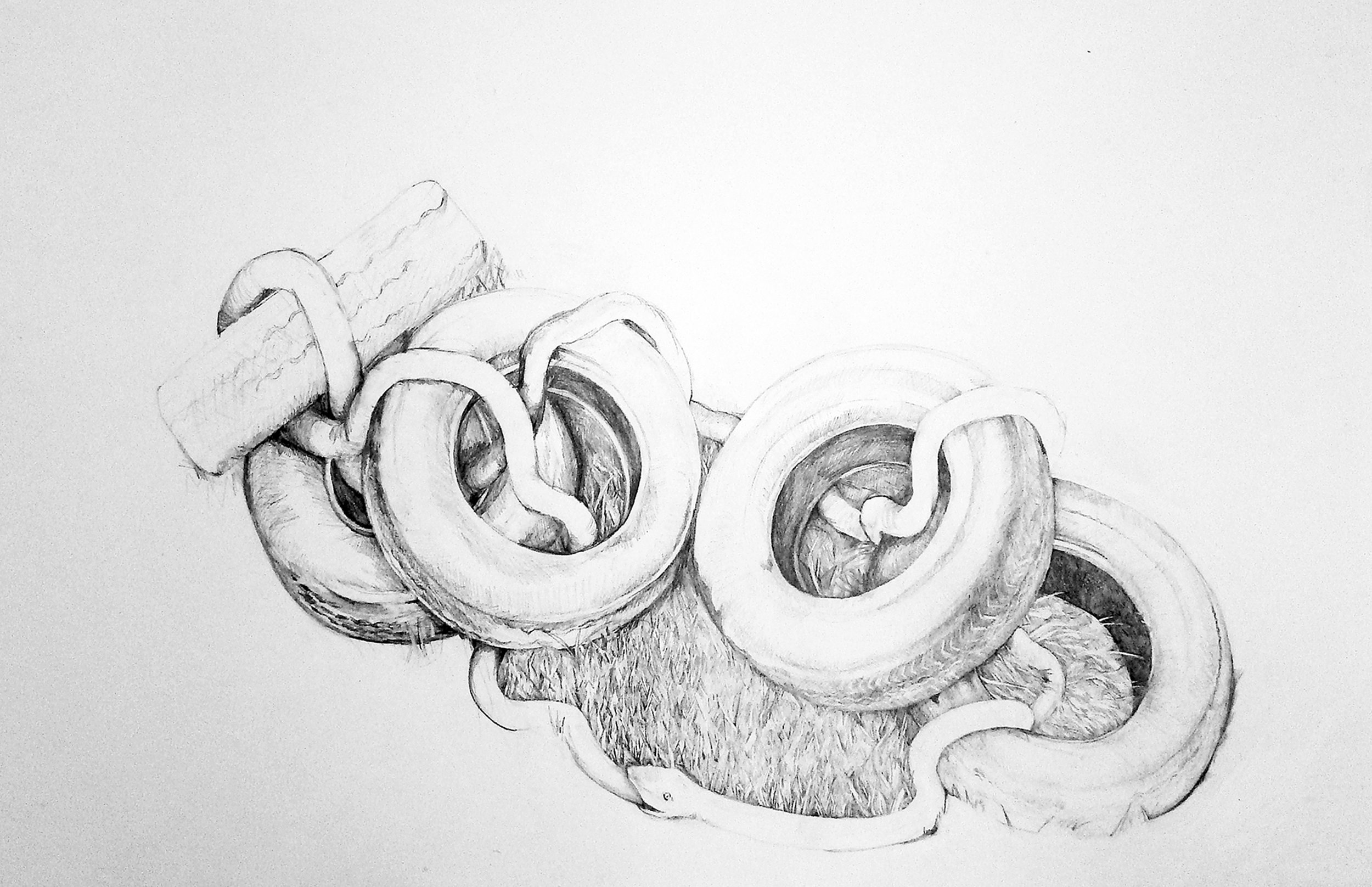
Katie Creyts
Wilderland
January 20 - March 25, 2018
KATIE CREYTS: WILDERLAND
Exhibition Date: January 20, 2018 to March 25, 2018
Reception Date: Saturday, January 20, 2018 - 2:00pm
Artist Talk: January 20, 2018 - 3pm
This quarter, the Museum of Northwest Art will focus on storytelling in and through art. How can we tell stories through art? How does art spread messages or statements? How many different stories exist in one artwork? In a Ted Talk entitled 2600 Years of History in One Object, Neil MacGregor, Director of the British Museum, described that all objects have a life that is initiated when they are created, and they often outlive the creator. Through their lives, objects also have multiple biographies that relate to current events, people and cultural trends. As we look deeper into the Winter exhibits, let’s think about the different stories told by the artists and lived by the objects.
Katie Creyts, Venus, 2016, Graphite drawing on paper, 37” x 29”
Courtesy of the Artist
Creyts lives on the edge of Spokane near the Latah River and Indian Canyon, the final home of Chief Spokane Garry. The land has been witness to bad behavior and suffering, and now Creyts walks the area with her dog to pick up trash that has been tossed aside. Often she will bring back objects from her excursions to draw and they serve as inspiration, or jumping off point, for her artworks. Her exhibit will include both drawings and etched window panes with fantastical subject matter. The viewer may recognize certain characters from fables or fairy tales, but a metaphor will emerge through the process of viewing.
Katie Creyts is an artist and art professor at Whitworth University. Creyts visualizes narratives using a wide range of materials, currently graphite on paper and etched glass. She has an MFA from Illinois State University, a BFA from Tyler School of Art.
Katie Creyts, Tickle and Lick, 2016, Graphite drawing on paper, 30” x 20”
Courtesy of the Artist
“This exhibition is a collection of fable- like scenes. Objects, characters, and places are constructed to highlight peculiar or stressed relationships and adaptations. These images examine the peculiar coexistence of wildlife with modern humanity. Typically fables and tales have a storyline that evokes a mora; a metaphor that is charged with changing bad behavior to better behavior or understanding.”
The scenes that Creyts creates are often a point departure from a familiar narrative that encourage a new way of thinking about a story. Take Never Tire for example: the viewer may recognize that the snake eating its own tale is the ancient symbol of the orobouros, which represented the infinite cycle of life and death in nature. However, the snake is wrapped around tires that appear to be abandoned. Many of Creyts’ artworks comment on environmental issues and interactions between people and nature. Nature may be excellent at rebirth, but what about products like tires?
Katie Creyts, Never Tire, 2015, Graphite Drawing on paper, 42” x 32”
Courtesy of the Artist


